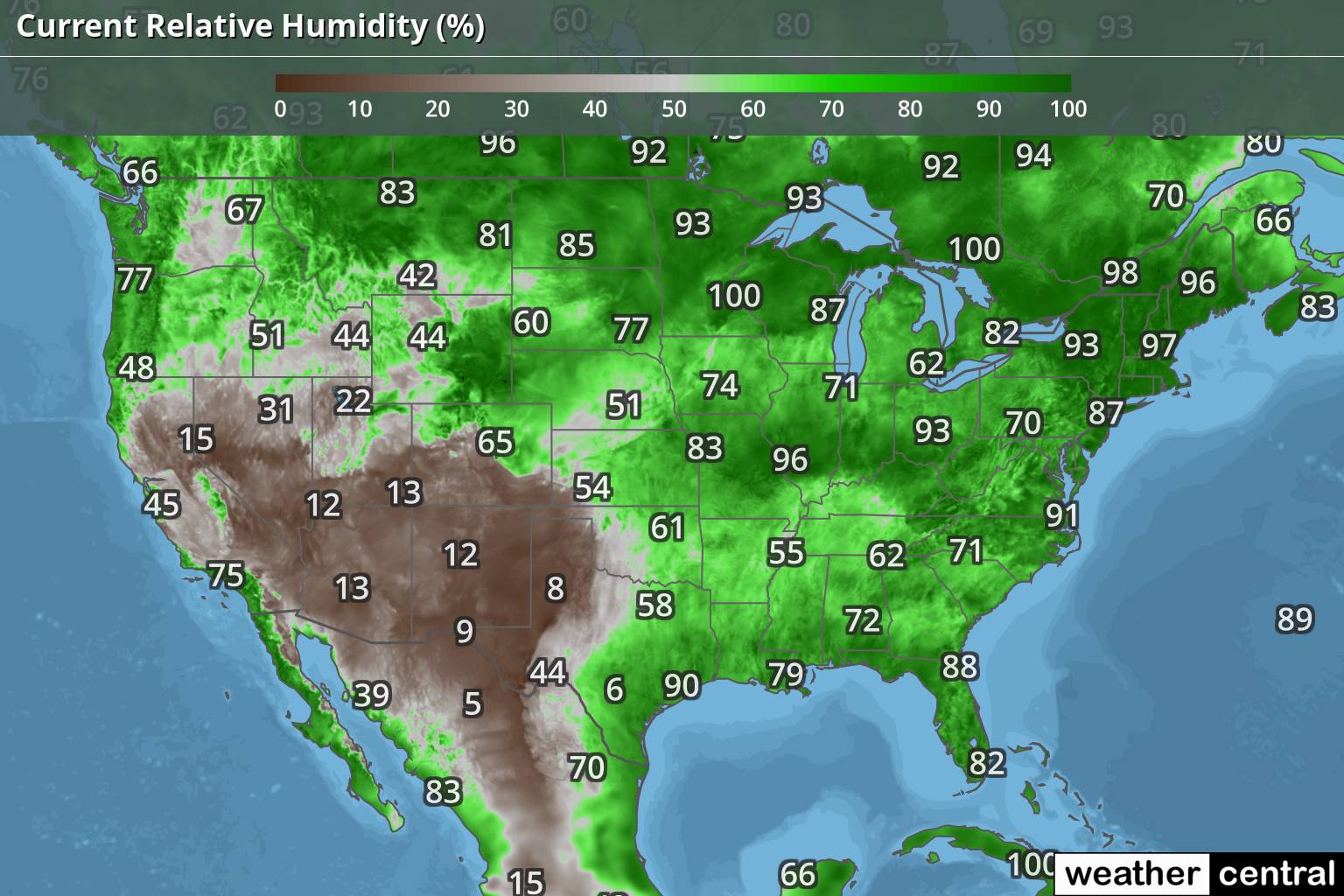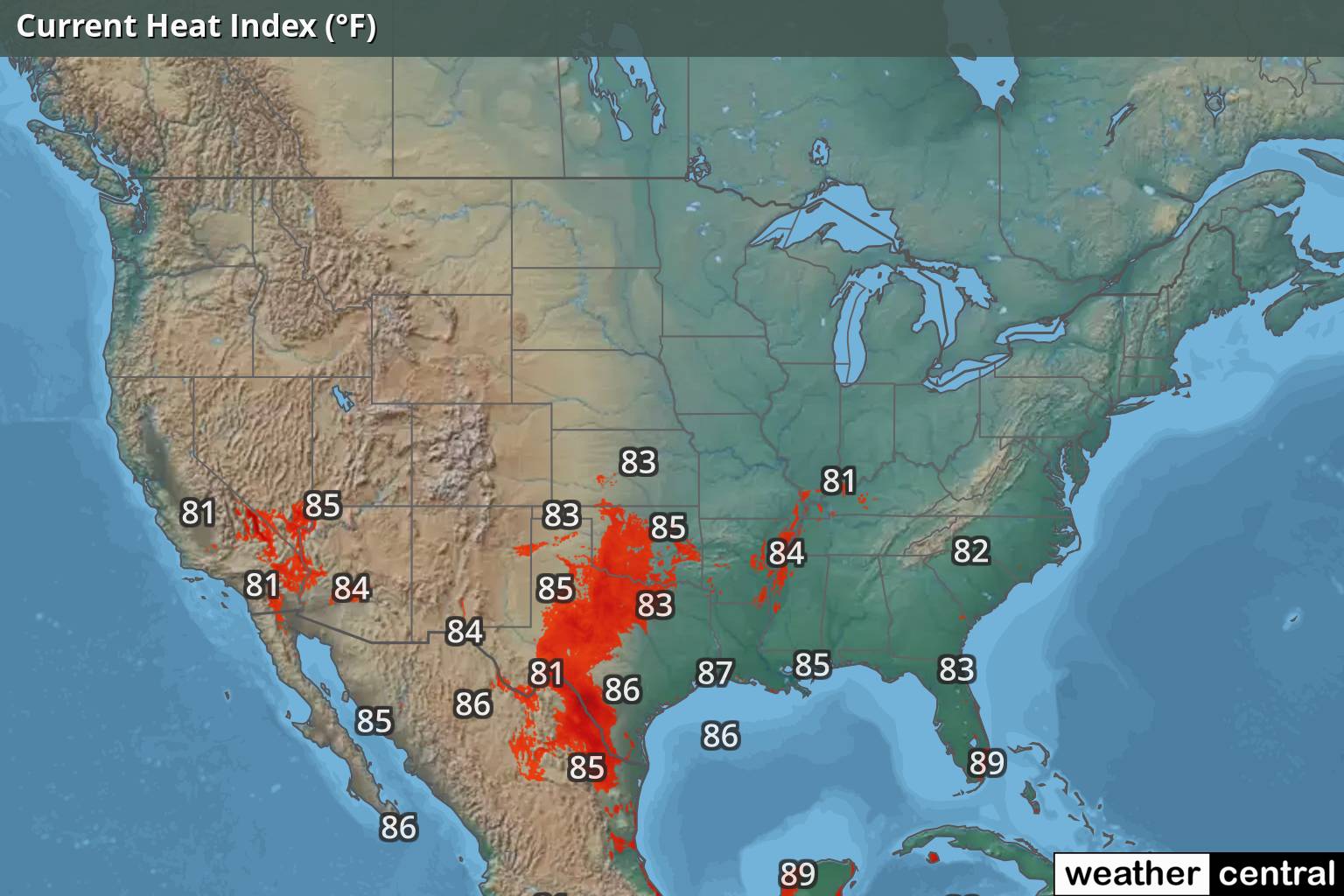"Summer Mugginess"? What happened to relative humidity?
OK, here's your science lesson for the day...
With the advisement of some smart meteorologist types, we have opted not to use relative humidity because "in terms of it feeling muggy, relative humidity by itself often isn't a good measure of how muggy it is." On cold days the relative humidity may approach 100%, but it still won't feel muggy. Obviously, temperature plays part in that hot, sticky feeling we want to avoid. A better measure was developed to incorporate temperature - the heat index. The result is also known as the "felt air temperature", "apparent temperature", "real feel" or "feels like".
Here's the "science-y" explanation: The human body normally cools itself by perspiration or sweating. Heat is removed from the body by evaporation of that sweat. However, high relative humidity reduces the evaporation rate. This results in a lower rate of heat removal from the body, hence the sensation of being overheated.
Here are two examples to drive the point home. Note the dramatic difference in the felt temperature for the same changes in relative humidity.
| Air temp 80 °F | ||||
|---|---|---|---|---|
| Relative Humidity | 40% | 60% | 80% | 100% |
| Heat Index ("felt temperature") | 80 °F | 82 °F | 84 °F | 87 °F |
| Air temp 90 °F | ||||
|---|---|---|---|---|
| Relative Humidity | 40% | 60% | 80% | 100% |
| Heat Index ("felt temperature") | 91 °F | 100 °F | 113 °F | 132 °F |
So if the relative humidity is 100%, in 80-degree heat, it will feel like 87 degrees. But in 90-degree heat, it will feel like a whopping 132 degrees! Yikes! 🥵
Let's look at a few fresh-off-the-internet examples that we are pulling in real time. Note that relative humidity and the heat index don't track. Minnesota has very high relative humidity (RH). However, the highest heat index (felt temp) states have comparatively low RH.


And that, my friend, is why we aren't using relative humidity to classify mugginess. You can imagine how bad it would be on even warmer days. It can become downright dangerous when both the temperature and the relative humidity are high.
So now you know. You can have one free college credit if you read this article to its dramatic conclusion. If you understand the article, give yourself three credits. That's our gift to you. 😉
